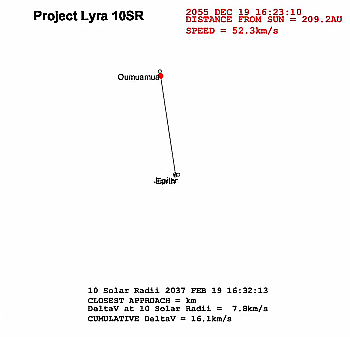Elon Musk’s employee update released January 12th
I have embedded below an employee update of the status of all of SpaceX’s projects, given by Elon Musk and released publicly on January 12, 2023. The video has been edited only to remove the many enthusiastic applauses by Musk’s audience of co-workers in order to shorten it.
Though Musk provided a lot of general information about the company’s long term goals with Starlink, Starship, Mars, the Moon, and other topics, these are the most important take-aways relating to its ongoing efforts now:
- Falcon 9: The company is now upgrading its first stage so that it will be able to fly reused forty times, not twenty. Musk also noted that they have now reused the rocket’s fairings more than 300 times.
- They are now aiming for about 150 launches in 2024. (It appears now that the biggest obstacle to this goal will be weather, as seen by the weather delays that have stalled Falcon 9 launches this very week.)
- The Dragon fleet has now spent more days at and flights to ISS than the NASA’s entire shuttle fleet.
- Starlink: It is a supplement to present phone and internet service, not a replacement, serving remote areas. Its biggest obstacle now however to providing that service is government approvals. The company is blocked by regulators in many places where the service is operational.
On Starship/Superheavy, he revealed these facts:
- They are planning to double its payload capacity to 200 tons to orbit, twice the Saturn-5.
- Starship would have made orbit on the second orbital test if it had had a payload. To simulate the weight of payload it had carried extraoxidizer, and when it vented these as it approached orbit it caused problems that activated the self-destruct system.
- The third orbital test flight will thus almost certainly reach orbit, and will then test engine burns, some refueling technology, payload deployment, and de-orbit procedures.
Musk emphasized that they must be able to fly these tests frequently to get Starship/Superheavy functioning, not just for SpaceX but for NASA’s Artemis program. As he said, “Time is the one true currency.” With each launch they refine the system to make it more reliable and operational. Without those launches they can’t.
He did not mention why launches might not happen frequently, probably because the last thing he needs to do is antagonize the regulators who are slowing him down. I (and other journalists) however are not under that restriction. The biggest obstacle to SpaceX’s success is the red-tape being wound around it by the Biden administration and its love of strict regulation, possibly instigated by its political hostility to Elon Musk as a person.
This government action to stymie freedom must end, and the sooner the better.
» Read more
I have embedded below an employee update of the status of all of SpaceX’s projects, given by Elon Musk and released publicly on January 12, 2023. The video has been edited only to remove the many enthusiastic applauses by Musk’s audience of co-workers in order to shorten it.
Though Musk provided a lot of general information about the company’s long term goals with Starlink, Starship, Mars, the Moon, and other topics, these are the most important take-aways relating to its ongoing efforts now:
- Falcon 9: The company is now upgrading its first stage so that it will be able to fly reused forty times, not twenty. Musk also noted that they have now reused the rocket’s fairings more than 300 times.
- They are now aiming for about 150 launches in 2024. (It appears now that the biggest obstacle to this goal will be weather, as seen by the weather delays that have stalled Falcon 9 launches this very week.)
- The Dragon fleet has now spent more days at and flights to ISS than the NASA’s entire shuttle fleet.
- Starlink: It is a supplement to present phone and internet service, not a replacement, serving remote areas. Its biggest obstacle now however to providing that service is government approvals. The company is blocked by regulators in many places where the service is operational.
On Starship/Superheavy, he revealed these facts:
- They are planning to double its payload capacity to 200 tons to orbit, twice the Saturn-5.
- Starship would have made orbit on the second orbital test if it had had a payload. To simulate the weight of payload it had carried extraoxidizer, and when it vented these as it approached orbit it caused problems that activated the self-destruct system.
- The third orbital test flight will thus almost certainly reach orbit, and will then test engine burns, some refueling technology, payload deployment, and de-orbit procedures.
Musk emphasized that they must be able to fly these tests frequently to get Starship/Superheavy functioning, not just for SpaceX but for NASA’s Artemis program. As he said, “Time is the one true currency.” With each launch they refine the system to make it more reliable and operational. Without those launches they can’t.
He did not mention why launches might not happen frequently, probably because the last thing he needs to do is antagonize the regulators who are slowing him down. I (and other journalists) however are not under that restriction. The biggest obstacle to SpaceX’s success is the red-tape being wound around it by the Biden administration and its love of strict regulation, possibly instigated by its political hostility to Elon Musk as a person.
This government action to stymie freedom must end, and the sooner the better.
» Read more












